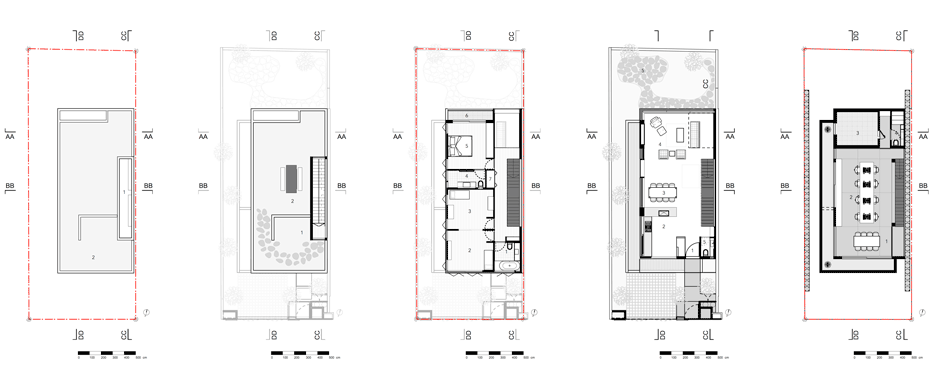David Lebenthal's Tel Aviv townhouse features a staircase with shelves stuck to its steel balustrade
A staircase suspended behind a screen of steel rods and welded shelves features inside this house in Tel Aviv, which architect David Lebenthal designed for himself and his family (+ slideshow).
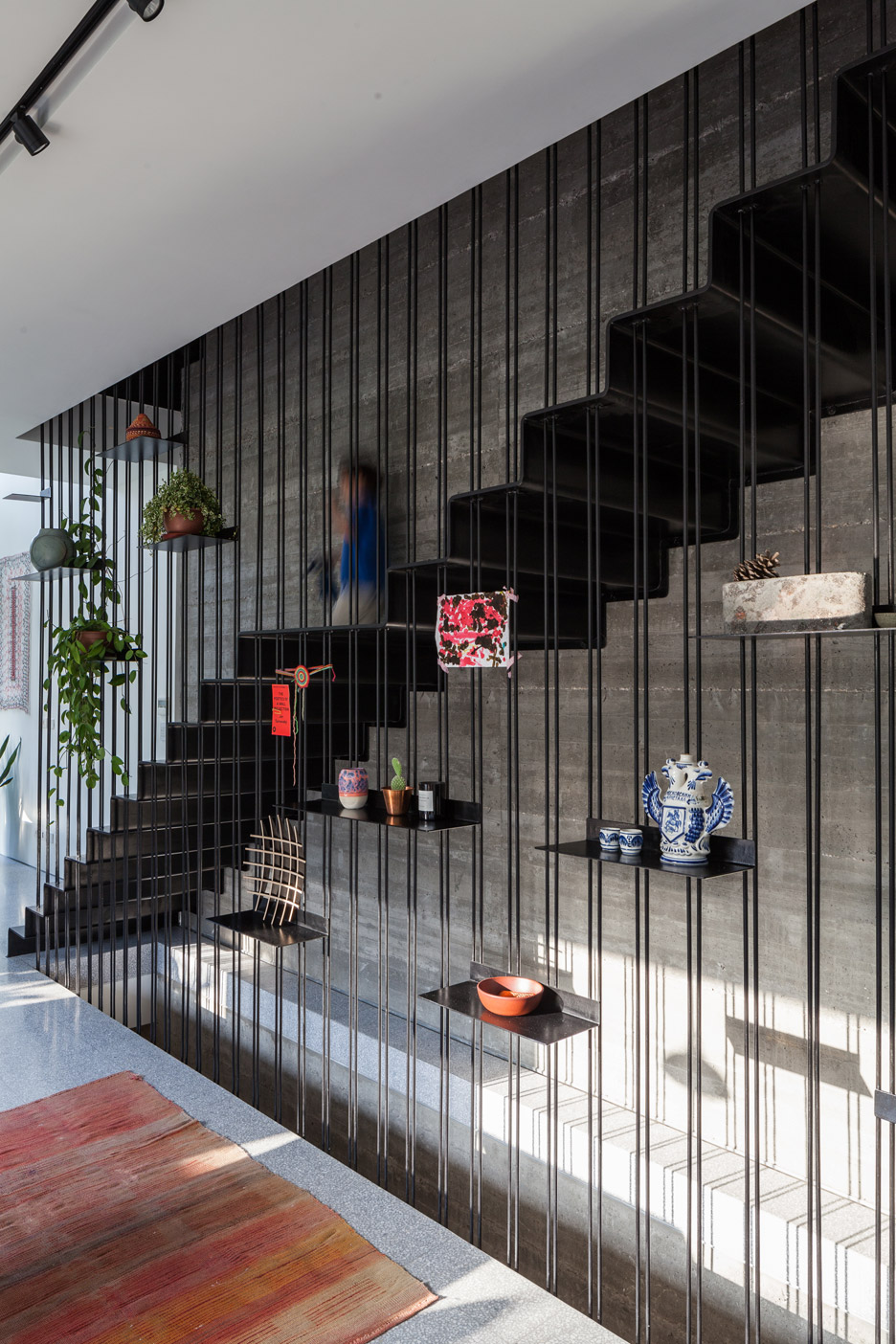
The townhouse is located in a residential neighbourhood in the south east of the Israeli city, and was designed by David Lebenthal Architects to occupy a long and narrow site that shares a party wall with its neighbour.
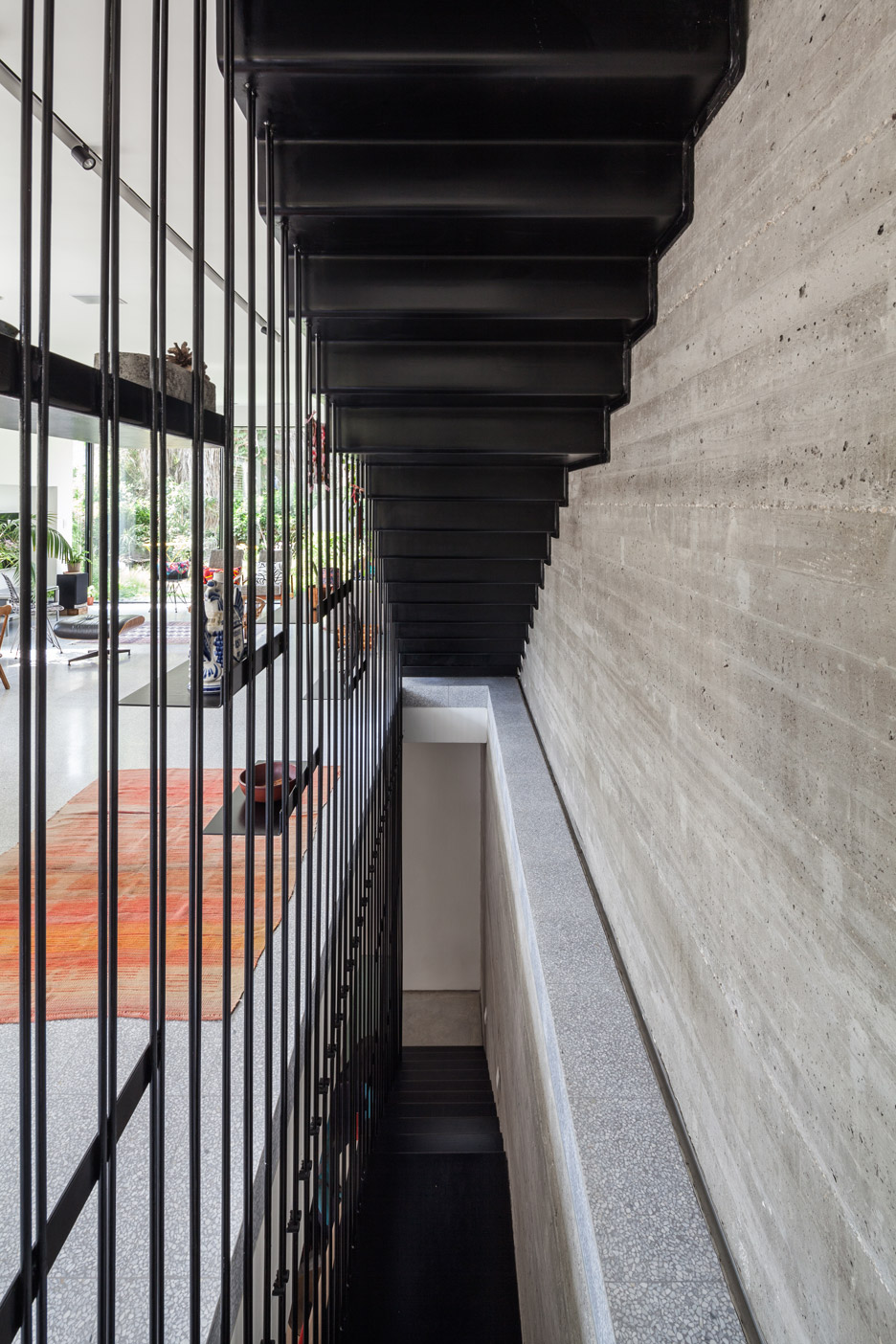
A simple arrangement of stacked boxes creates four floors of living spaces and a large studio in the basement. A staircase servicing all storeys is positioned against this exposed concrete surface of the party wall.
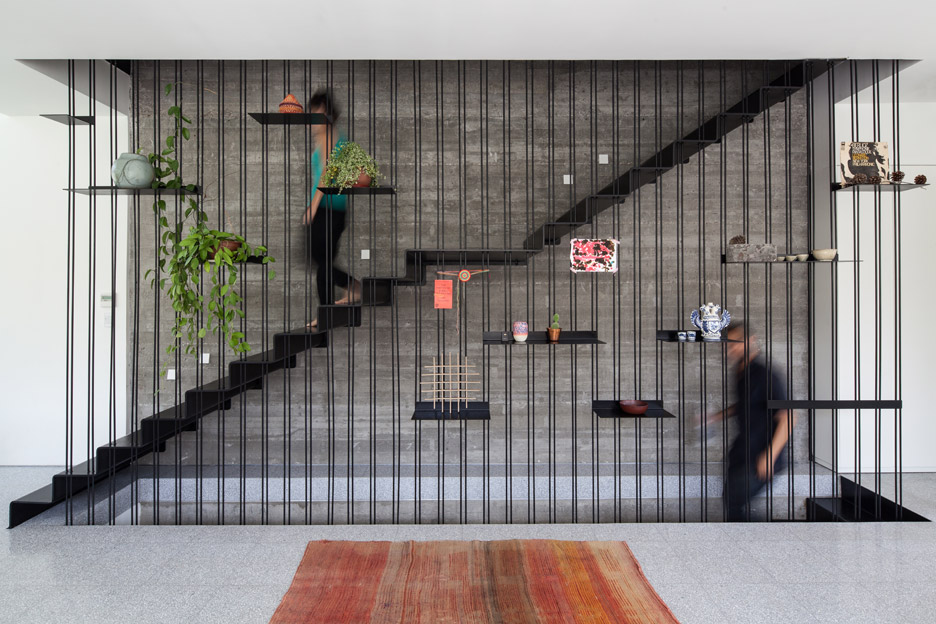
"We chose to work with the long contour of the site by placing the stairs parallel to the neighbouring house," architect Tal Shittrit told Dezeen.
"The choice of a long staircase further accentuates the length of the site and its position allows the house to have three open sides."

The staircase is formed of 12-millimetre-thick sheet metal that was folded and welded to form slimline treads. Slender steel rods spanning the space along its outer edge intersect with the treads to provide stability.
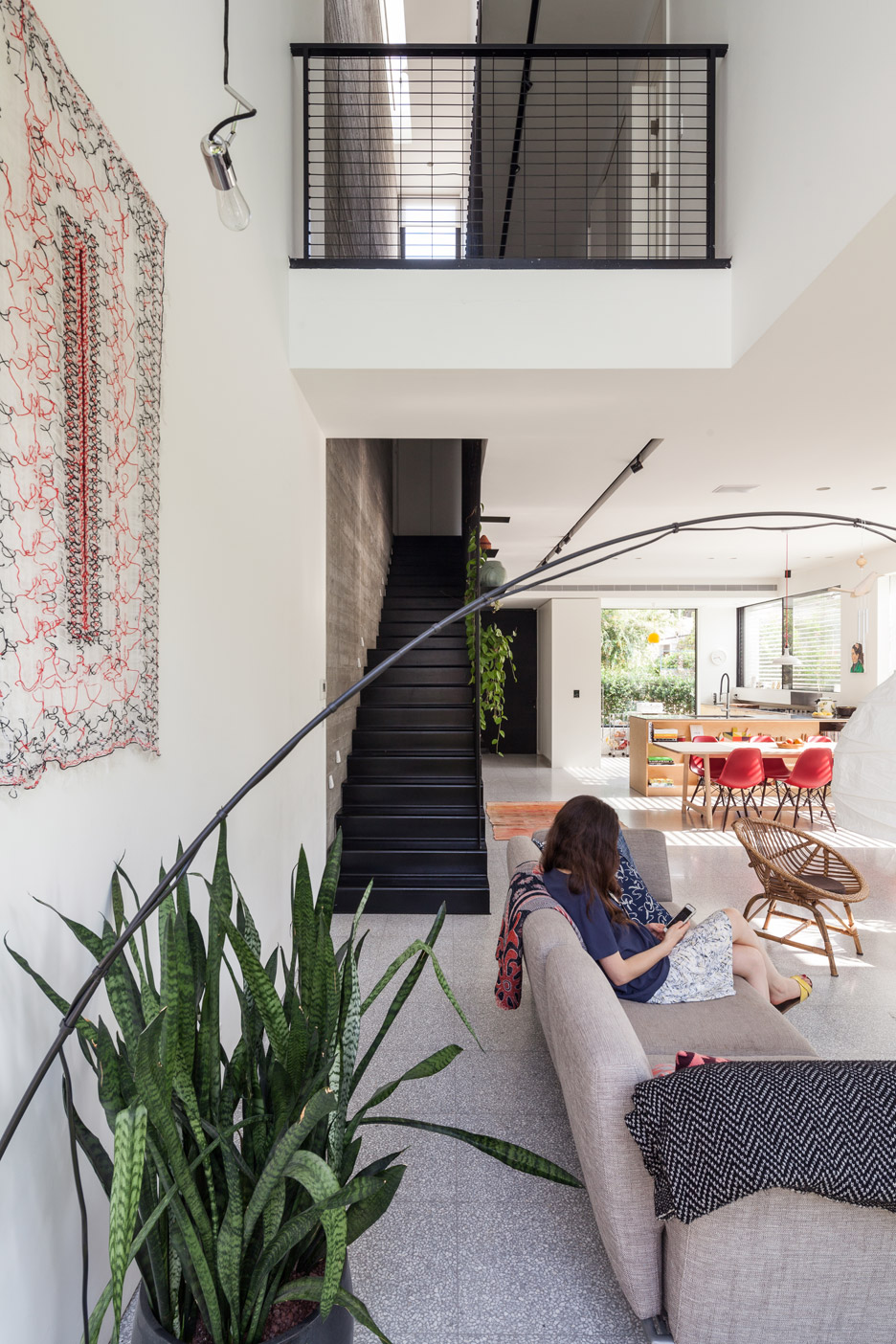
In the large ground floor space – which houses an open-plan living, dining and kitchen area – there was room to attach shelves that are welded to the structure to provide additional rigidity. The irregular arrangement creates a display area for various objects.
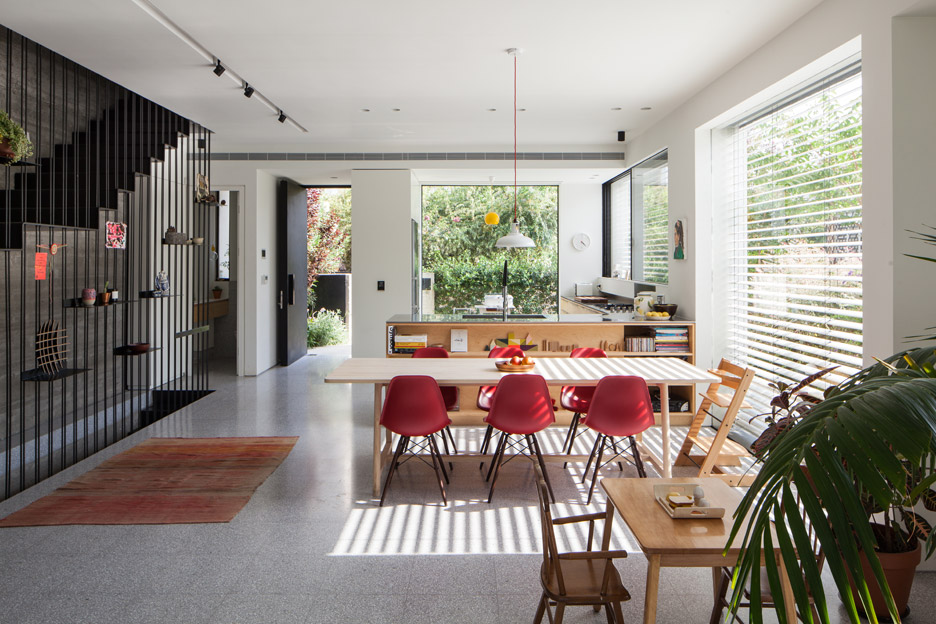
"The decision to have a series of rods as opposed to a closed railing was made to enlarge the space and provide a visual connection between vertical movement and space," Shittrit added.
Other examples of staircases incorporating storage include one made from plywood with built-in shelves and cupboards, and another where the balustrade doubles as book storage. The slender sheet-metal profile is also reminiscent of a staircase installed by architect Pitsou Kedem in a Tel Aviv flat.

The width of the hallway on the first floor restricted the implementation of similar shelves, so flat metal panels are affixed to the vertical rods instead. These provide surfaces to which the children's artworks can be attached using magnets.
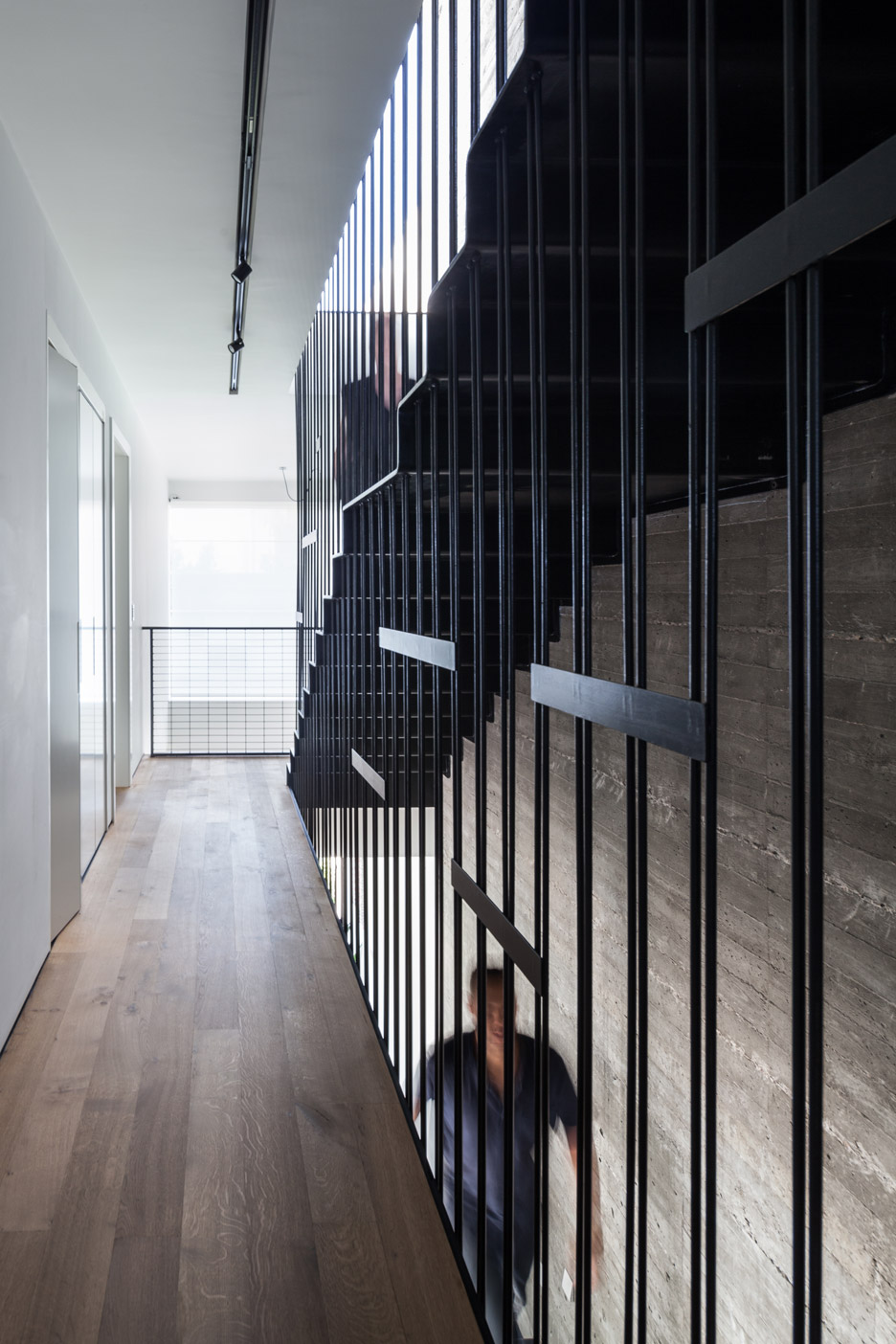
The ground-floor living space culminates in sliding glass doors that lead out to a garden at the rear, as well as a double-height void that is overlooked by a landing next to the master bedroom.
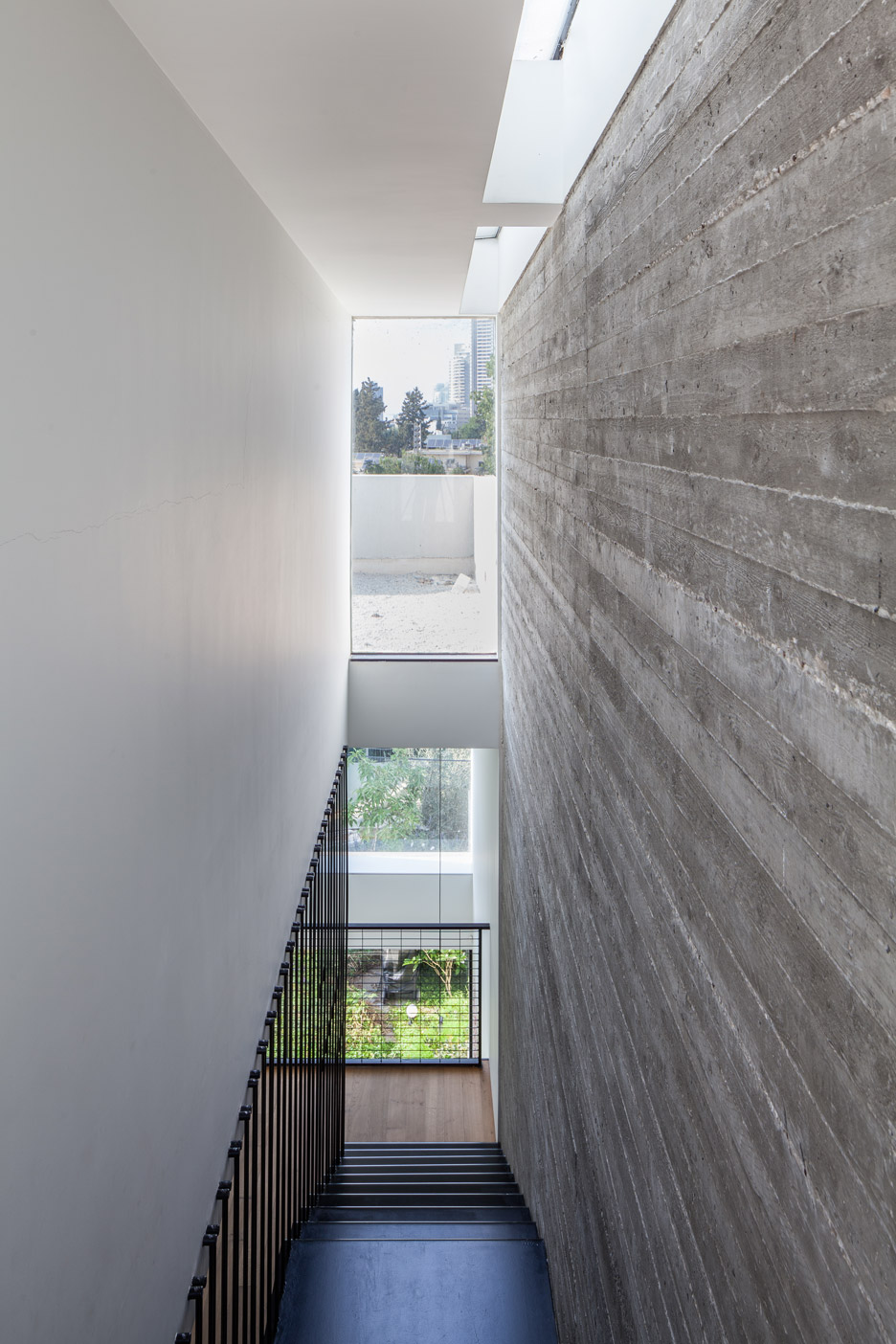
On the floor above, bedrooms for the two children adjoin one another to create a large shared playroom that will eventually be divided by the addition of a central furniture unit.
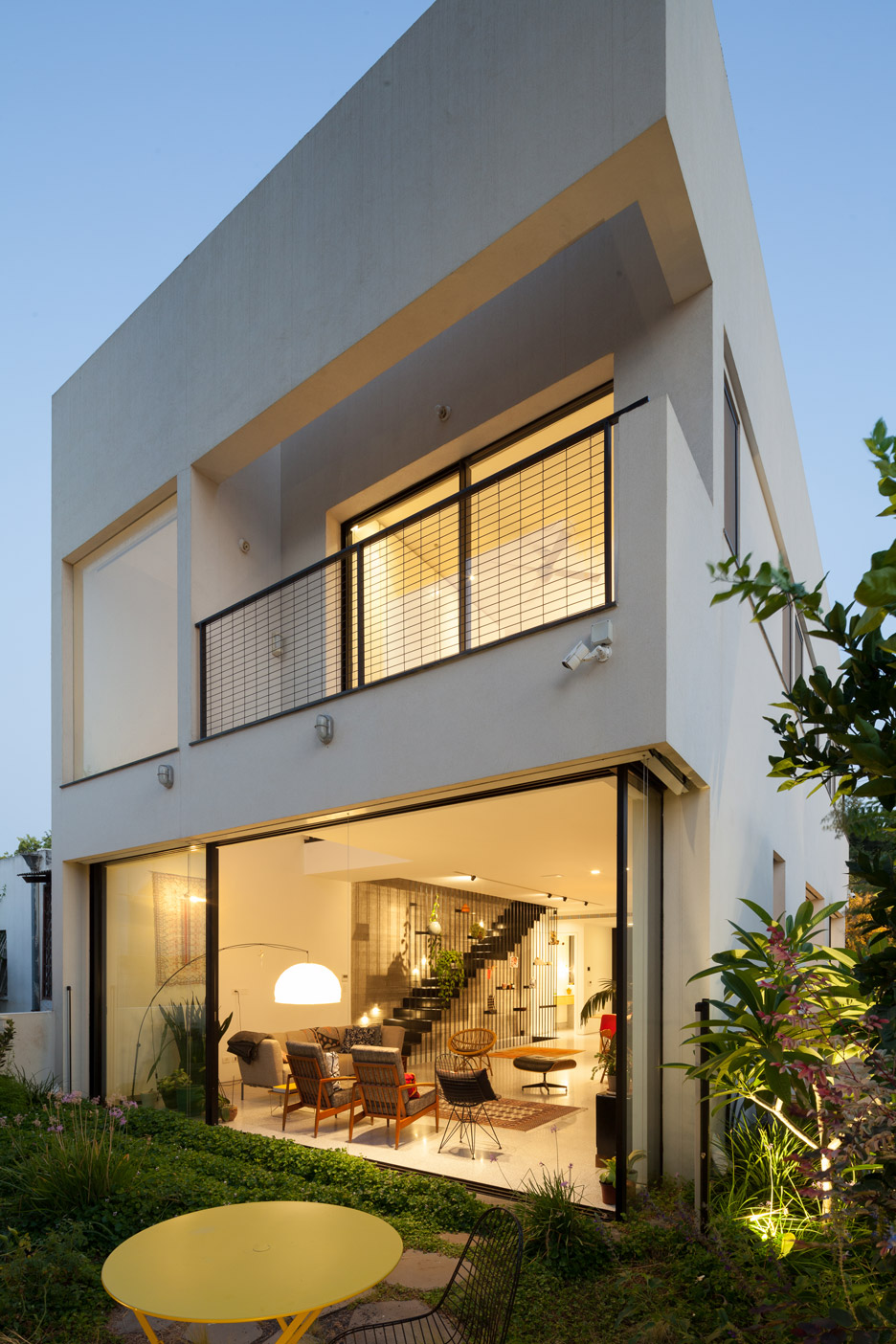
The bright interior features white walls and large windows that fill the spaces with daylight and look out onto the surrounding garden.
"The main aim was to create a clean space with a simple materiality that reflects a classic Tel Aviv archetype," Shittrit explained. "The materiality includes concrete, render, terrazzo, wood and black metal, which are in line with traditional construction methods in Tel Aviv."
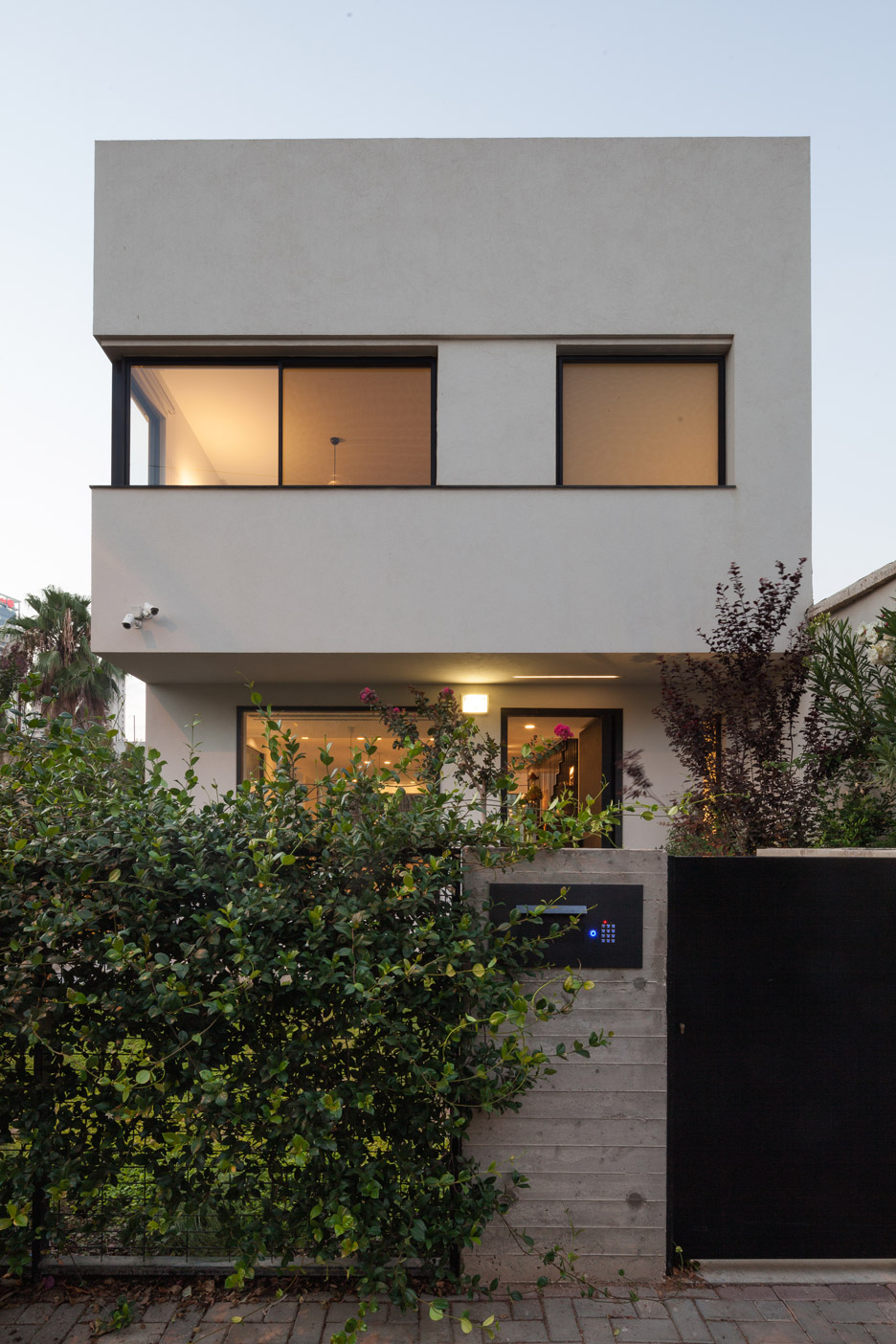
The house's rooftop is intended as an additional outdoor space and features a built-in concrete dining table from which the family can look out across the city.
The concrete volume containing the staircase at this level is punctuated by a large window and a row of skylights that allow natural light to reach inside.
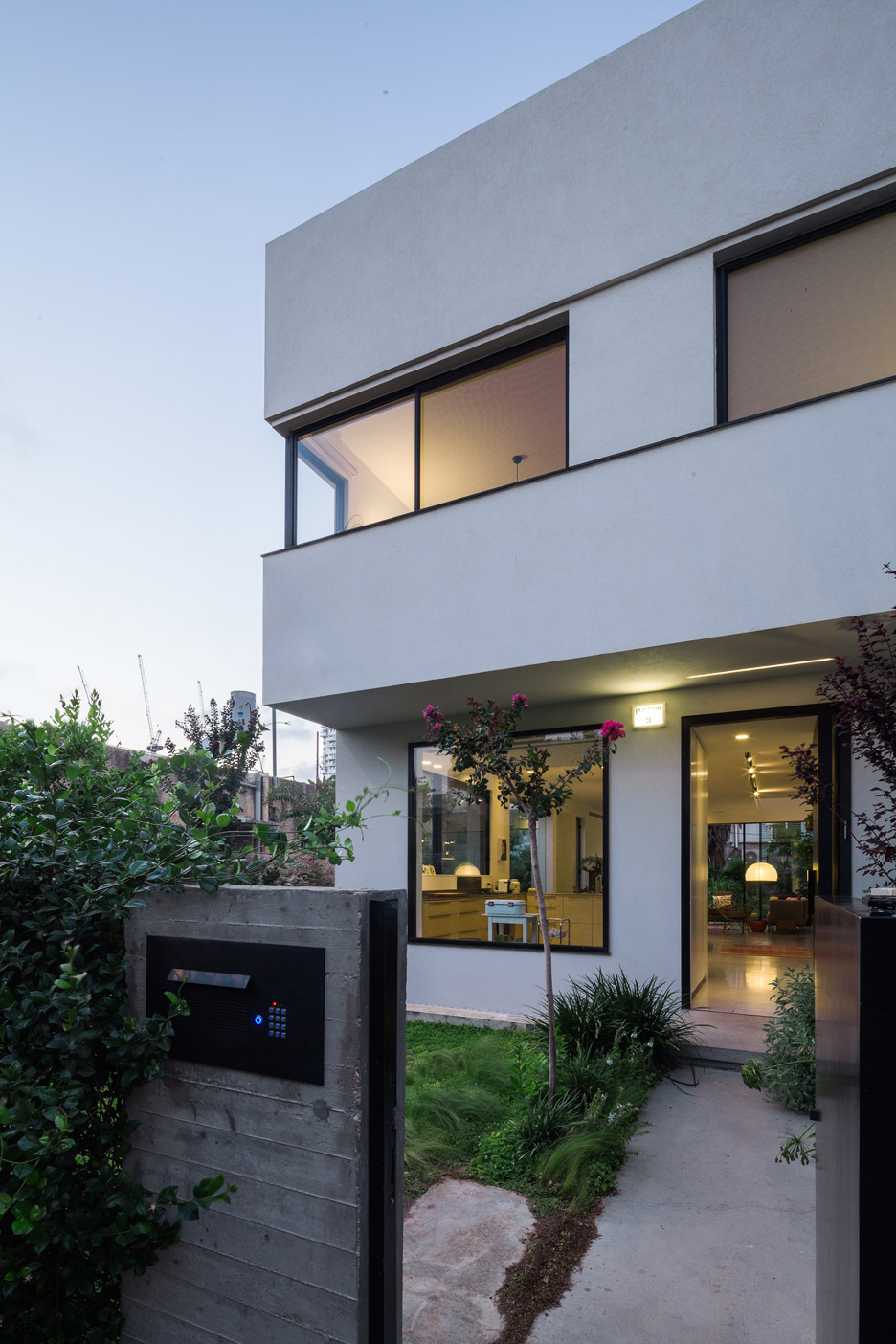
Externally, the house is rendered white. A cantilevered section at the front of the building provides a sheltered entrance adjacent to the off-street parking area.
Photography is by Tal Nisim.
